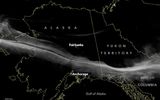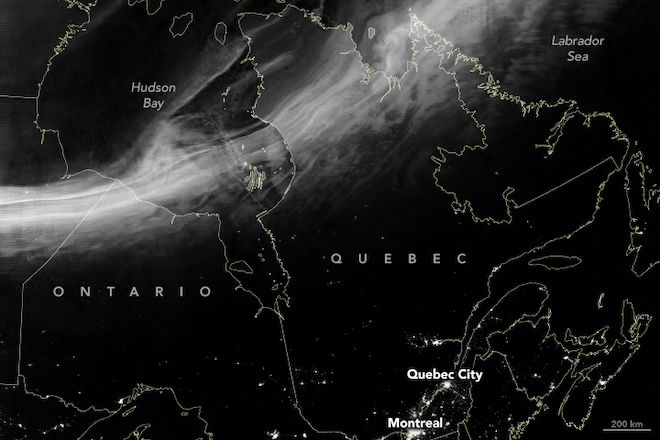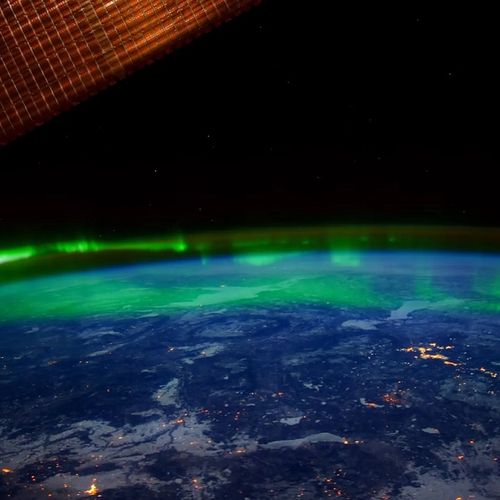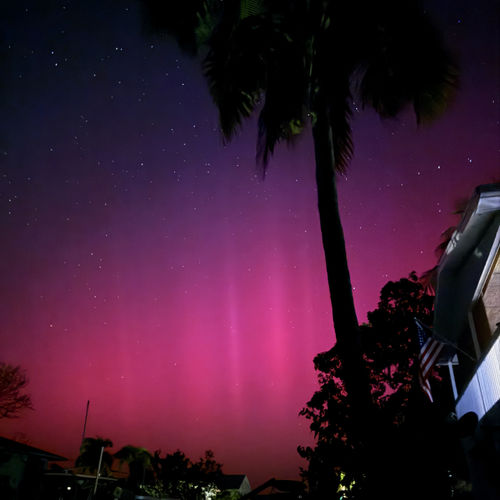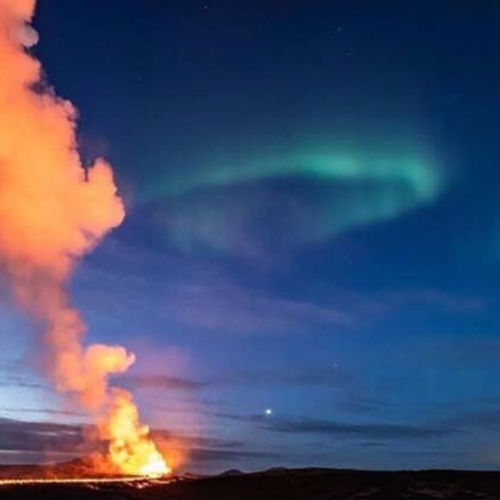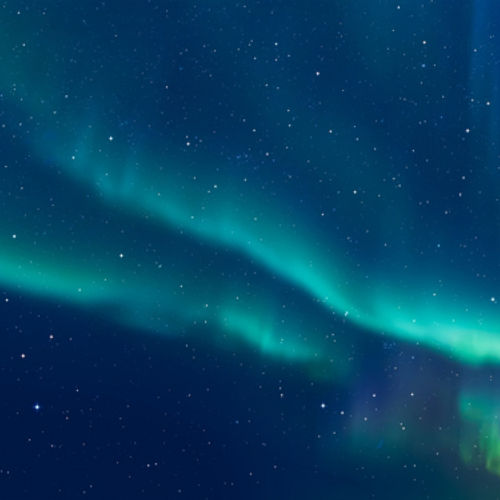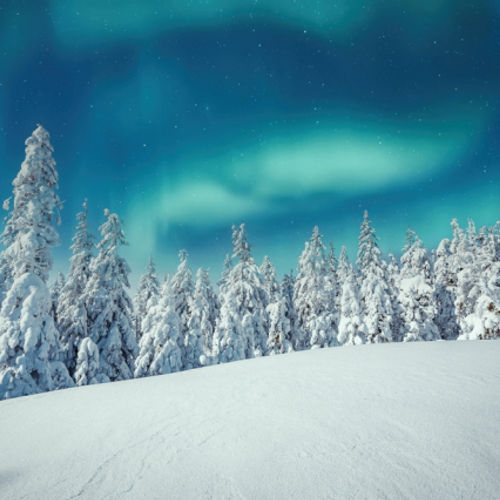
| Added | Fri, 23/11/2018 |
| Источники | |
| Дата публикации | Thu, 22/11/2018
|
| Версии |
From dusk till dawn on 5 November, the residents of Alaska enjoy the beauty of dazzling auroras. Seven days later they again lit up over Alaska and Canada. These dancing lights were also visible from space.
The first image shows the Aurora over Alaska early on the morning of 5 November. The glow was so bright that it lit up the ground. It's likely that its increased brightness is due to the fact that it happened two days before the new moon when the sky is darker than at other times of the lunar cycle.
The second image shows the Aurora over Eastern Canada on 12 November. According to satellite and ground-based observations, it can also be seen from Alaska, Norway and Scotland.
Both images were obtained using the VIIRS instrument on the Suomi NPP satellite, which defines the city lights and other night signals such as auroras, atmospheric glow and reflected moonlight. In these images the sensor has detected the emission of visible light that happened when the energy of a particle trickled down from the magnetosphere of the Earth in gases of the upper atmosphere.
Now the period of the solar minimum, a relatively quiet period of activity on the Sun which occurs every 11 years. At this time, the Sun appears less sunspots and flares, which can result in polar auroras. However, at solar minimum, auroras occur more often due to coronal holes, which are emitted from streams of solar particles. High speed flow can reinvigorate the space, shaking the magnetic bubble of the Earth and cause auroras.
Both lights were caused by high speed streams from coronal holes. Coronal hole, which caused the lights on 5 November, was particularly noticeable because it was kept for several months. She first appeared in August and sent high-speed flows to the Ground, causing at least four very strong geomagnetic storms. NASA satellites observe the Sun and the Earth, to see what happens when this coronal hole and the other would turn again to our planet.
Translated by «Yandex.Translator»
Новости со схожими версиями
Log in or register to post comments
